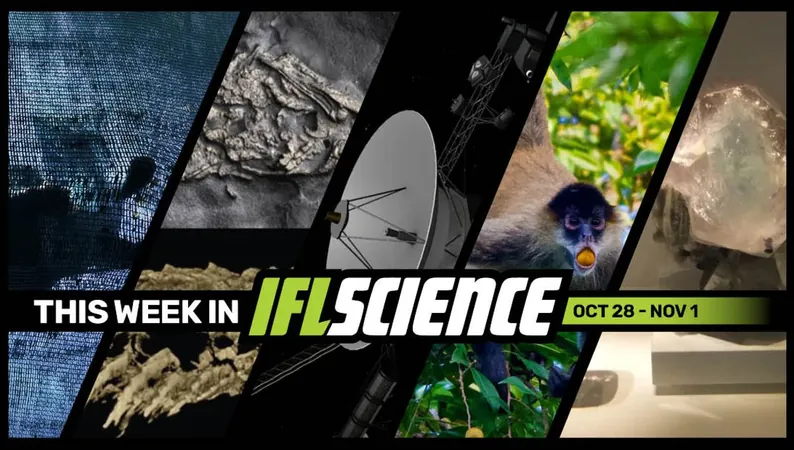
Breakthrough in RNA Research: Direct Sequencing Uncovers Game-Changing Discoveries
2024-11-01
Author: Yu
Introduction
For years, sophisticated experiments and an array of RNA-sequencing (RNA-seq) data have hinted at a significant gap in our understanding of RNA—the inability to analyze the molecule directly. Traditional RNA-seq relies heavily on complementary DNA (cDNA), which merely approximates RNA, leading scientists to infer data about the original RNA structure instead of observing it directly.
RNA's Complexity
This limitation arises from the dynamic and complex nature of single-stranded RNA, which folds intricately, making it challenging for common sequencing technologies to decode entire transcripts. As a result, repetitive segments, hairpin structures, and diverse modifications have posed substantial obstacles to researchers aiming for direct RNA analysis.
A Call for Change
However, the scientific community is rallying for change. A recent report by the National Academies of Sciences, Engineering, and Medicine (NASEM) has advocated for a comprehensive 15-year initiative aimed at developing the capability to sequence RNA with all its modifications in place—execpting a transformative advancement reminiscent of the Human Genome Project. "Harnessing an understanding of RNA modifications holds monumental potential not only for human health and medicine but also for shaping the biosphere and its technologies," stated Dr. Victor J. Dzau, president of the National Academy of Medicine.
Empowered by Technology
Empowered by new technologies, some researchers are already achieving milestones in RNA analysis. Nanopore-based sequencing platforms, which are equally effective for both DNA and RNA, have allowed scientists to bypass the cDNA conversion entirely. This innovative approach is leading to groundbreaking discoveries in RNA modifications and noncoding RNAs—addressing critical quality concerns for RNA-based therapeutics.
Examining RNA Modifications
RNA modifications are vital for the molecule's functionality and are typically lost during cDNA conversion. However, by applying direct RNA analysis, scientists are finally able to characterize these modifications in-depth. Notable studies, such as one conducted at the University of Colorado, examined post-transcriptional modifications in transfer RNAs across six species, revealing 43 distinct modifications and significant insights into how bacteria adapt during viral infections.
Impact of Spaceflight
The exploration doesn't stop there; a compelling study from Weill Cornell Medicine examined how spaceflight impacts human physiology. By performing direct RNA-seq on samples from astronauts, researchers observed alterations in gene expression due to environmental stressors, including a striking increase in the modification known as m6A post-flight. This pioneering work represents a new frontier in understanding human biology's response to extraordinary conditions.
Unlocking Secrets of Noncoding RNAs
One of the lingering enigmas in molecular biology revolves around noncoding RNAs, especially long variants that have eluded analysis due to their repetitive sequences. Recent advancements have illuminated these challenges. Researchers from the University of York made a noteworthy breakthrough in studying clear cell renal cell carcinoma, uncovering over 10,000 novel transcripts, including a gene linked with patient relapse—a significant discovery in cancer research.
Immune Response Studies
In a separate investigation at the University of Oklahoma, scientists examined the immune response to influenza utilizing direct RNA analysis of bronchial epithelial cells. They discovered two long intergenic noncoding RNAs that exhibited substantial methylation post-infection—a crucial finding that could influence future immunotherapy approaches.
Ensuring Quality for RNA Therapies
As the enthusiasm for RNA-based therapies burgeons, particularly following the success of mRNA vaccines during the COVID-19 pandemic, direct RNA-sequencing is being utilized for validation and quality control in therapeutic development. Researchers in Australia have pioneered a protocol called VAX-seq to assess mRNA vaccine quality. This method promises to enhance the efficiency of evaluating essential attributes like sequence, length, and integrity, which are critical for mRNA drug manufacturing.
Future Perspectives
The advances driven by direct RNA analysis are not merely incremental but signify a revolutionary era in biology and medicine. As tools and techniques evolve, they are poised to enrich our comprehension of biological processes and expedite the development of innovative therapies. Researchers expect more novel findings across a spectrum of species and health conditions, enhancing our ability to tackle complex medical challenges.
Conclusion
The landscape of RNA biology is transforming, and as scientists unlock its secrets, humanity stands on the brink of potential breakthroughs that may change the course of medicine forever.


 Brasil (PT)
Brasil (PT)
 Canada (EN)
Canada (EN)
 Chile (ES)
Chile (ES)
 España (ES)
España (ES)
 France (FR)
France (FR)
 Hong Kong (EN)
Hong Kong (EN)
 Italia (IT)
Italia (IT)
 日本 (JA)
日本 (JA)
 Magyarország (HU)
Magyarország (HU)
 Norge (NO)
Norge (NO)
 Polska (PL)
Polska (PL)
 Schweiz (DE)
Schweiz (DE)
 Singapore (EN)
Singapore (EN)
 Sverige (SV)
Sverige (SV)
 Suomi (FI)
Suomi (FI)
 Türkiye (TR)
Türkiye (TR)